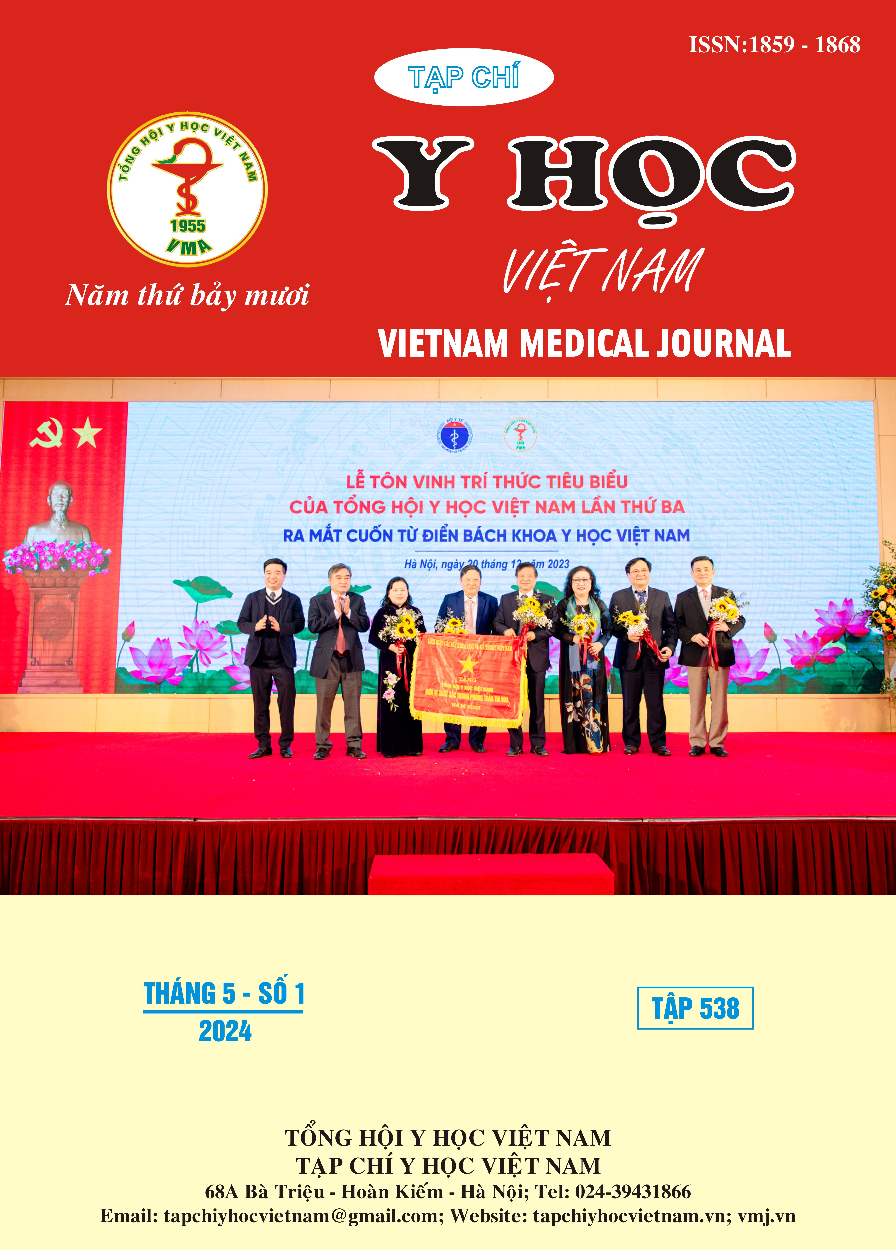ENDOSCOPIC RETROGRADE CHOLANGIOPANCREATOGRAPHY IN ELDERLY PATIENTS WITH COMMON BILE DUCT STONES: SAFETY AND EFFICACY EVALUATION
Main Article Content
Abstract
Introduction: Common bile duct stones predominantly afflict older adults, yet studies on retrograde endoscopic intervention for stone extraction remain limited. Therefore, this study aims to assess the outcomes and safety of retrograde endoscopic intervention for common bile duct stones in patients ≥ 60, comparing them with their younger counterparts. Subjects and Methods: This cross-sectional descriptive study involved 716 patients divided into two groups: Group I (<60 years old) with 236 patients and Group II (≥60 years old) with 480 patients. Retrograde endoscopic intervention for stone extraction was performed at Military Central Hospital 108 from January 2021 to January 2023. Results: Patients in Group II presented with higher rates of concurrent chronic conditions such as cardiovascular, metabolic, and neurological disorders (33.1%, 11.5%, and 4%, respectively) compared to Group I (5.5%, 0.8%, and 3.8%, with p < 0.05). Infections in Group II were more severe than in Group I (fever: 60.2% vs. 50%, p=0.01; severe biliary tract infection: 19.6% vs. 7.2%, p=0.004; bloodstream infection: 12.5% vs. 7.2%, p=0.04; and septic shock: 6.9% vs. 5.5%, p=0.4). Treatment outcomes revealed no significant difference in the initial stone clearance rates between Group I (67.8%) and Group II (65%). Biliary leakage occurred in 31.6% of Group I and 25.2% of Group II, with no statistically significant difference (p > 0.05). The complication rates between Group I (11%) and Group II (10.8%) did not differ significantly (p < 0.05). Finally, the recovery time after ERCP and hospitalization duration were equivalent between the two study groups. Conclusion: Retrograde endoscopic intervention is safe and effective for treating common bile duct stones in elderly patients when comparing outcomes, complications with a younger patient cohort.
Article Details
Keywords
Biliary stones, complications of biliary stones, elderly individuals
References
2. Dương Xuân Nhương. Nghiên cứu đặc điểm lâm sàng, cận lâm sàng và kết quả điều trị sỏi ống mật chủ bằng nội soi mật tụy ngược dòng. Luận án tiến sĩ y học, Học viện quân y, 2018
3. Buxbaum J.L., Abbas Fehmi S.M., Sultan S., et al. (2019), ASGE guideline on the role of endoscopy in the evaluation and management of choledocholithiasis, Gastrointest Endosc. 89 (6): 1075-1105.e15.
4. Costi R., Gnocchi A., Di Mario F., et al. (2014), Diagnosis and management of choledocholithiasis in the golden age of imaging, endoscopy and laparoscopy, World J Gastroenterol. 20 (37): 13382-401.
5. Early D.S., Ben-Menachem T., Decker G.A., et al. (2012), Appropriate use of GI endoscopy, Gastrointest Endosc. 75 (6): 1127-31.
6. Fritz E., Kirchgatterer A., Hubner D., et al. (2006), ERCP is safe and effective in patients 80 years of age and older compared with younger patients, Gastrointestinal Endoscopy. 64(6):899-905.
7. Harness J.K., Strodel W.E., Talsma S.E. (1986), Symptomatic biliary tract disease in the elderly patient, Am Surg. 52 (8): 442-5.
8. World Health Organization. World Health Report 2003.


